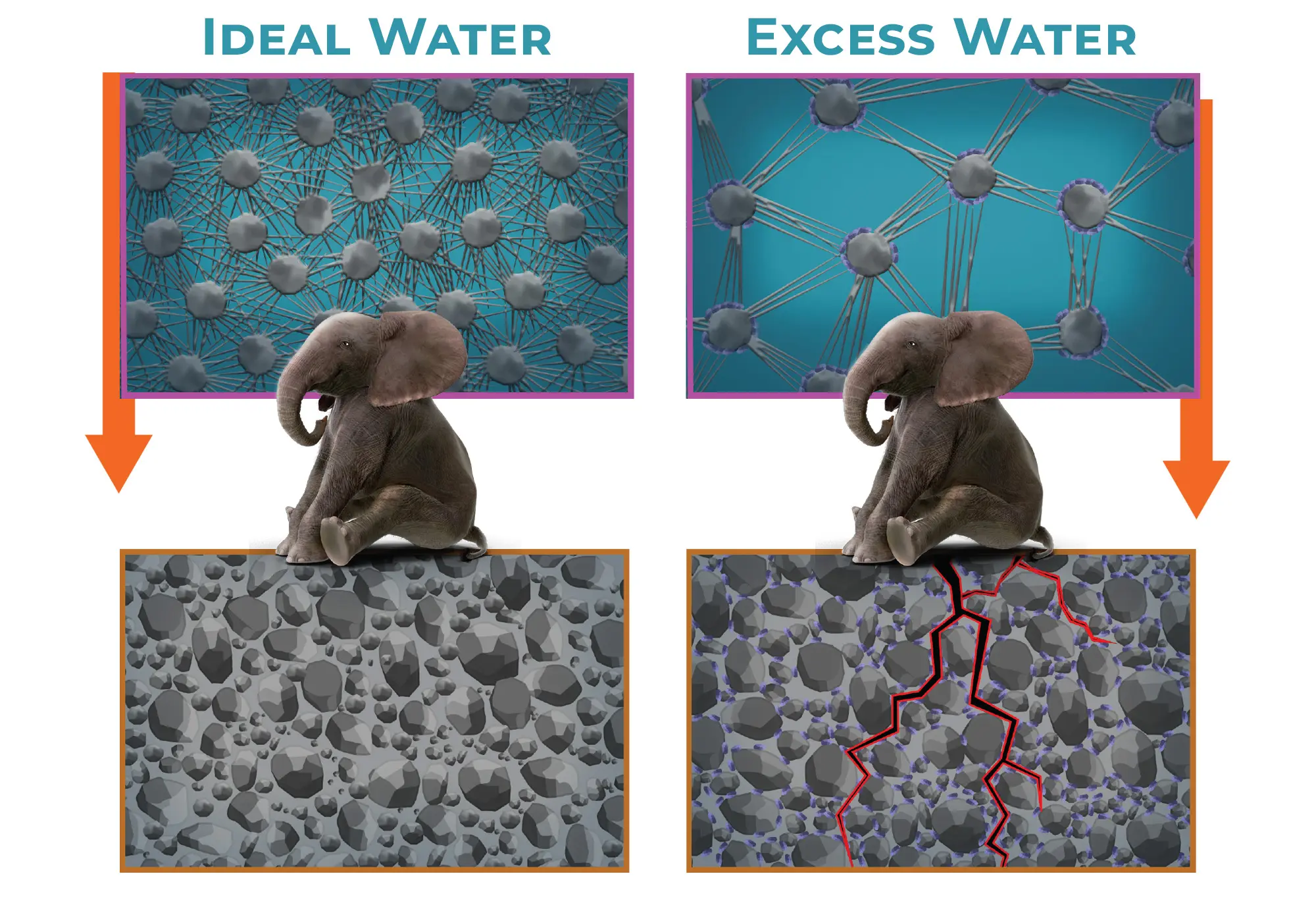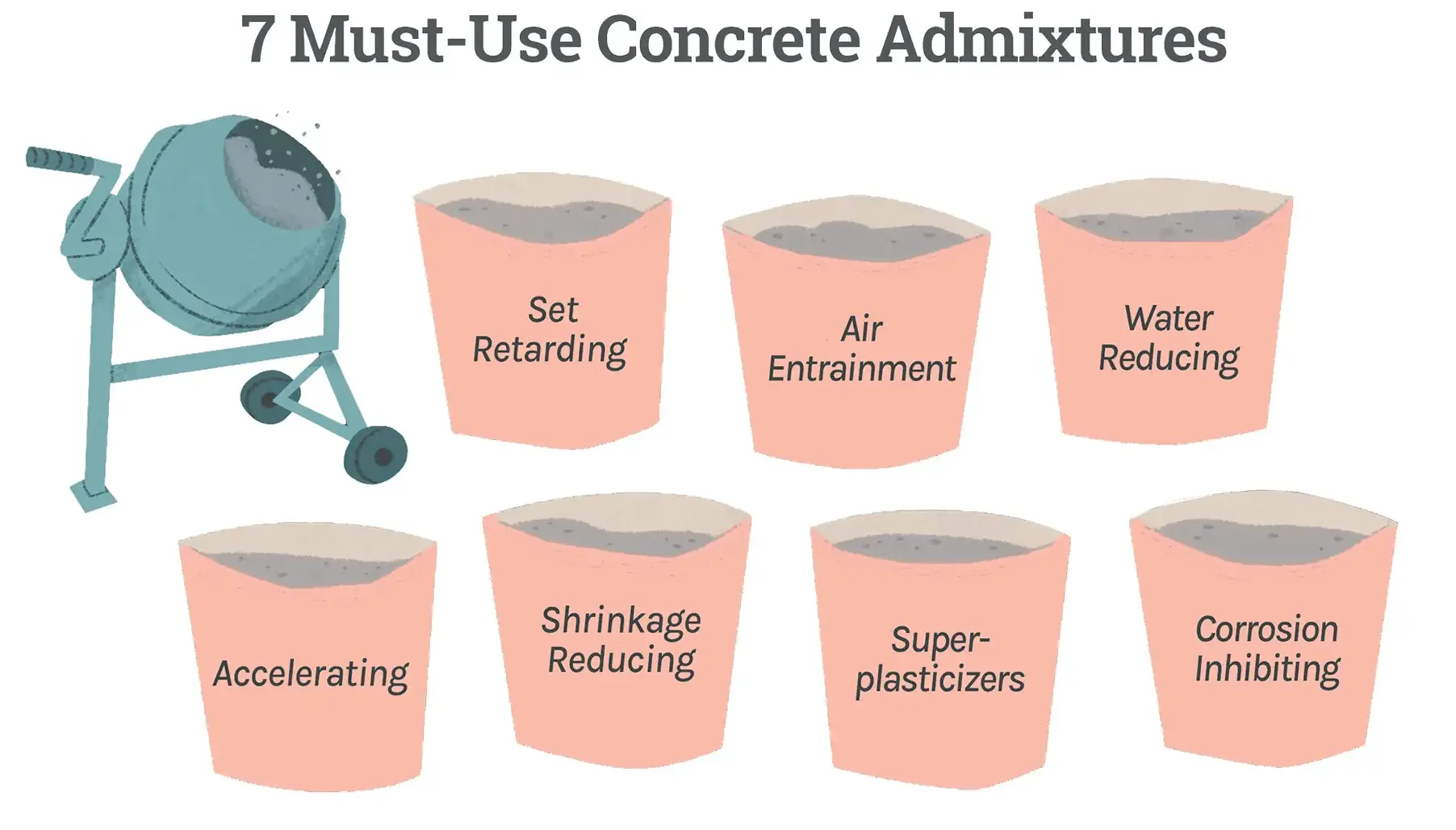
Concrete is the backbone of modern construction, providing strength and stability to buildings, bridges, roads, and various infrastructure projects. Making good concrete is essential to ensuring its longevity, strength, and resistance to environmental factors. In this article, we will explore the step-by-step process of creating high-quality concrete and share valuable tips to achieve exceptional results in your construction.

Steps to Make Strong Concrete
Follow the below steps to make strong concrete.
Choose the Right Raw Materials:

The very first step in making good concrete is to select the right materials. Use high-quality cement, premium-quality sand, and aggregate. Verify that the cement adheres to the standards.
Accurate Proportions:
 Achieving the correct mix proportions is crucial for good concrete. Follow the recommended ratios of cement, sand, and aggregate to maintain the desired strength and workability. Use a measuring system to ensure precision and consistency in the mix.
Achieving the correct mix proportions is crucial for good concrete. Follow the recommended ratios of cement, sand, and aggregate to maintain the desired strength and workability. Use a measuring system to ensure precision and consistency in the mix.
Mixing the concrete:

Good micing is essential to obtain a uniform distribution of ingredients. Use a concrete mixer or a mixing platform and rotate the materials until they are fully combined. Adequate mixing prevents the formation of weak spots in the final product.
Gradation of Aggregates:
 Well-graded aggregates ensure a dense and strong concrete mix. Choose aggregates of different sizes to fill gaps and optimize the packing density. Proper gradation enhances the interlocking effect, improving the concrete overall strength of the concrete.
Well-graded aggregates ensure a dense and strong concrete mix. Choose aggregates of different sizes to fill gaps and optimize the packing density. Proper gradation enhances the interlocking effect, improving the concrete overall strength of the concrete.
Control Water-Cement Ratio:
 The water-cement ratio greatly influences the concrete’s strength and durability. Avoid excessive water, as it weakens the mixture. Aim for a low water-cement ratio to maximize strength and reduce the risk of cracking.
The water-cement ratio greatly influences the concrete’s strength and durability. Avoid excessive water, as it weakens the mixture. Aim for a low water-cement ratio to maximize strength and reduce the risk of cracking.
Additives and Admixtures:
 Consider using additives and admixtures to enhance the concrete’s properties. These can improve workability, increase strength, or provide resistance to environmental factors such as freezing and thawing.
Consider using additives and admixtures to enhance the concrete’s properties. These can improve workability, increase strength, or provide resistance to environmental factors such as freezing and thawing.
Air Entrainment:
 For concrete exposed to freeze-thaw cycles, incorporating air-entraining agents is essential. These create tiny air bubbles that allow the water to expand when frozen, preventing the concrete from cracking.
For concrete exposed to freeze-thaw cycles, incorporating air-entraining agents is essential. These create tiny air bubbles that allow the water to expand when frozen, preventing the concrete from cracking.
Proper Curing:
 Curing is a critical step in the concrete-making process. It involves maintaining adequate moisture and temperature to gradually allow the concrete to gain strength. Curing can be done by applying a wet cloth, spraying water, or using curing compounds.
Curing is a critical step in the concrete-making process. It involves maintaining adequate moisture and temperature to gradually allow the concrete to gain strength. Curing can be done by applying a wet cloth, spraying water, or using curing compounds.
Avoiding Common Mistakes:
 Stay vigilant during the process to avoid common mistakes like insufficient compaction, overwatering, or inadequate curing. Proper attention to detail will result in concrete that meets its design specifications.
Stay vigilant during the process to avoid common mistakes like insufficient compaction, overwatering, or inadequate curing. Proper attention to detail will result in concrete that meets its design specifications.
Test and Quality Control:
 Perform regular tests on concrete samples to ensure they meet the required strength and consistency. Conduct compression tests, slump tests, and air content tests as part of your quality control process.
Perform regular tests on concrete samples to ensure they meet the required strength and consistency. Conduct compression tests, slump tests, and air content tests as part of your quality control process.
Conclusion
Making good concrete is very important. By selecting high-quality materials, following precise mix proportions, and applying proper construction techniques, you can achieve strong, durable concrete that is capable of withstanding the test of time. Whether you are building a small project or a massive infrastructure, investing in the quality of your concrete will pay off in the long run, ensuring the safety and stability of your construction for years to come.